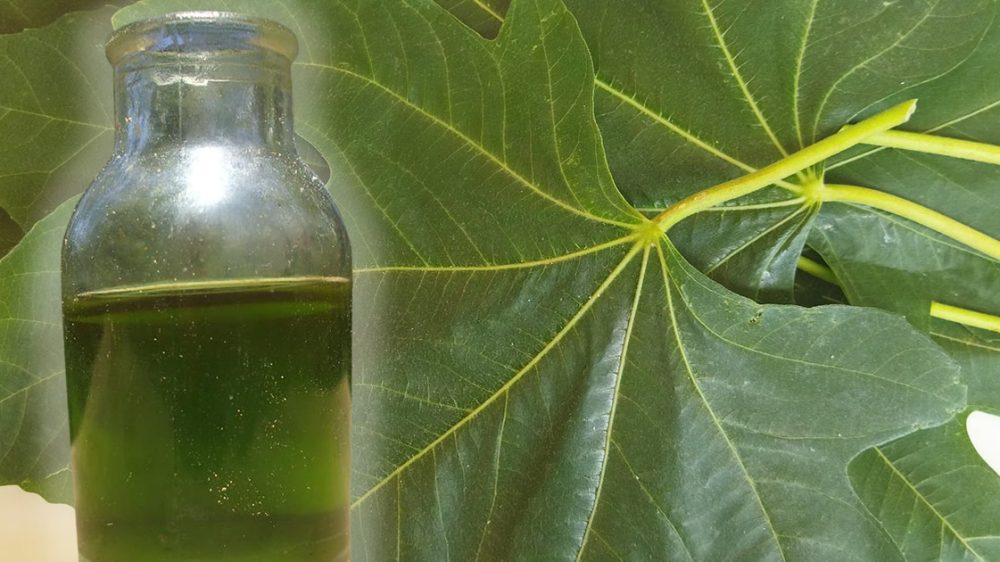Plants and trees offer a wide range of valuable resources for human health and well-being, and fig leaves are no exception.
Among the many beneficial properties of this plant, the preparation of fig leaf oil has proven to be a versatile and effective natural remedy for treating calluses and warts, in addition to offering many other benefits for the skin and health.
In this article, we will explore how to prepare fig leaf oil and analyze its many benefits.
How to Prepare Fig Leaf Oil
Making fig leaf oil is a relatively simple process that requires just a few ingredients. Here’s how to do it:
Ingredients:
Fresh fig leaves (about 1 cup)
Carrier oil (olive oil, coconut oil, almond oil, etc.)
A dark glass jar
A fine sieve or cheesecloth
Instructions:
Collect fresh, clean fig leaves. Make sure they are free of pesticides or chemicals.
Wash them gently under running water to remove any remaining dirt.
Dry the leaves thoroughly using a clean towel.
Finely chop the fig leaves to increase the contact surface with the oil.
He fills the dark glass jar with the chopped leaves.
Pour the carrier oil into the pot until the leaves are completely covered.
Close the jar and place it in a cool, dark place for about 2-3 weeks. Shake the jar daily to facilitate the extraction of the active ingredients.
After the infusion period, strain the oil using a fine sieve or cheesecloth to separate the leaves from the oil.
Transfer the fig leaf oil to a dark glass bottle and store it in a cool, dark place.
Benefits of Fig Leaf Oil:
Fig leaf oil is known for its healing properties and benefits for the skin. Among its main advantages are:
Treatment of Corns and Warts: Fig leaf oil is traditionally used to reduce the appearance of corns and warts. With its softening and moisturizing properties, it can help soften thickened skin from calluses and warts, making them easier to remove.
Antioxidant properties: Fig leaves contain antioxidant compounds that help fight oxidative stress and protect the skin from free radical damage.
Hydratation de la peau : L’huile de feuille de figuier est riche en nutriments qui peuvent aider à hydrater et adoucir la peau, améliorant ainsi sa texture et son éclat.
Apaisant pour les irritations cutanées : Grâce à ses propriétés apaisantes, l’huile peut être appliquée sur les irritations cutanées mineures, comme les rougeurs ou les légères démangeaisons, pour réduire l’inconfort.
Anti-inflammatoire : l’huile de feuille de figuier contient des composés dotés de propriétés anti-inflammatoires potentielles, qui peuvent aider à calmer la peau enflammée ou irritée.
Comment appliquer l’huile de feuille de figuier
Pour utiliser l’huile de feuille de figuier contre les cors et les verrues, suivez ces étapes :
Nettoyage : Nettoyez soigneusement la zone affectée.
Application : Appliquez une petite quantité d’huile de feuille de figuier sur la zone affectée.
Massage : Massez doucement l’huile sur la peau, en vous concentrant sur les callosités ou les verrues.
Absorption : Laissez l’huile être absorbée par la peau. Vous pouvez couvrir la zone avec un bandage ou un pansement.
Répéter : répétez l’application deux fois par jour jusqu’à ce que vous remarquiez des améliorations.
En conclusion, l’huile de feuille de figuier est un remède naturel intéressant à considérer pour traiter les callosités et les verrues, en plus d’offrir de nombreux autres bienfaits pour la santé de la peau.
N’oubliez pas d’en appliquer d’abord une très petite quantité sur la peau pour vérifier toute réaction allergique ou autre irritation.
Cependant, il est important de rappeler que les résultats peuvent varier d’une personne à l’autre et qu’en cas de problèmes cutanés persistants ou graves, il est toujours conseillé de consulter un professionnel de la santé avant d’utiliser un remède naturel.

